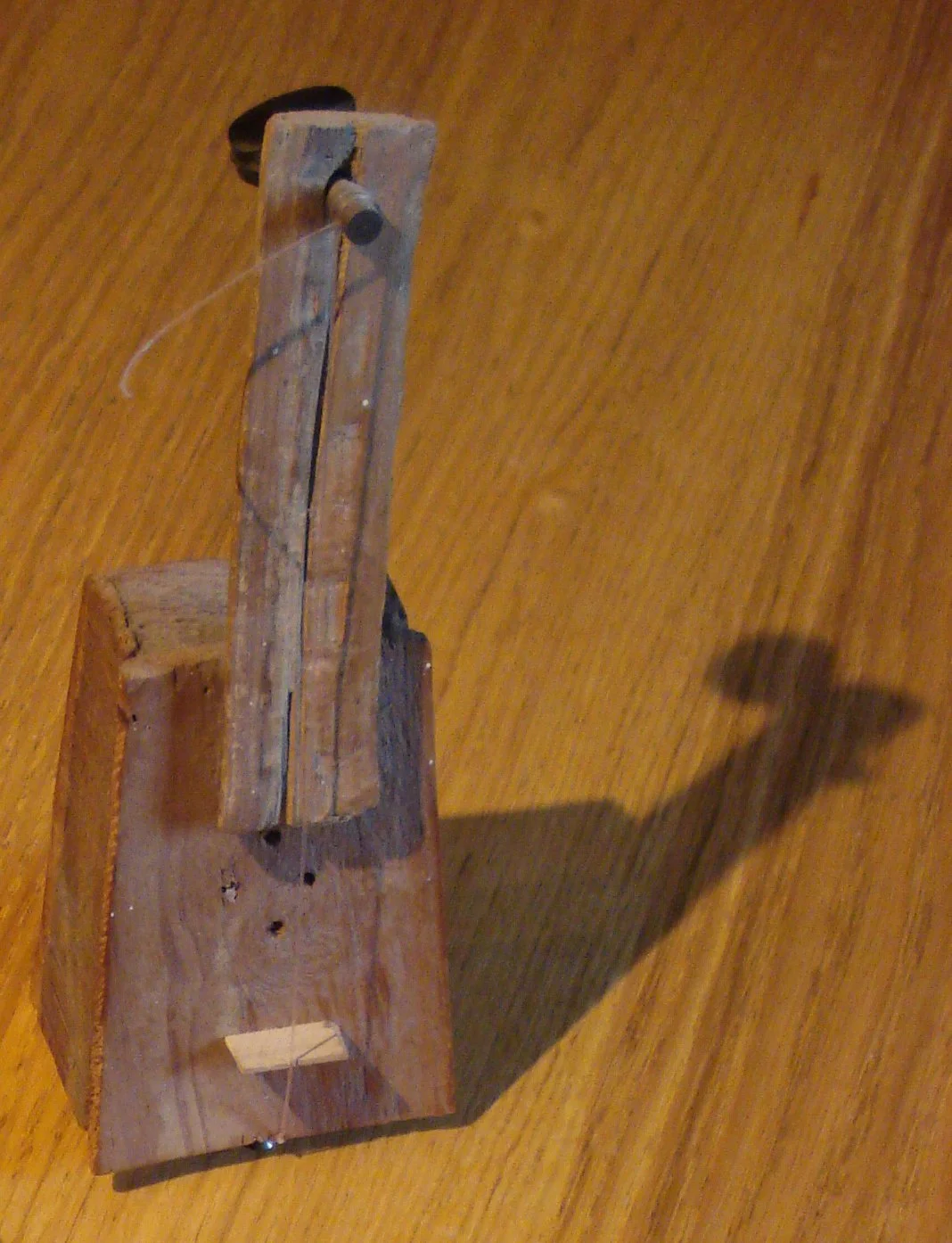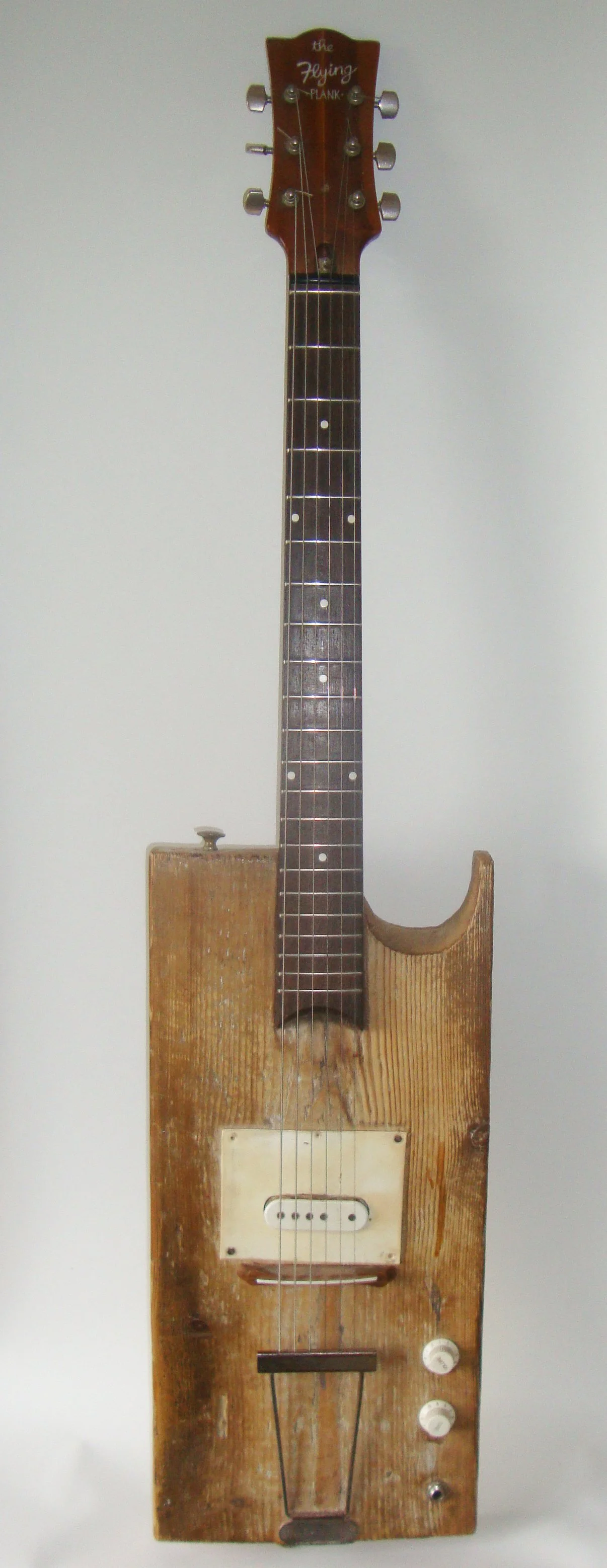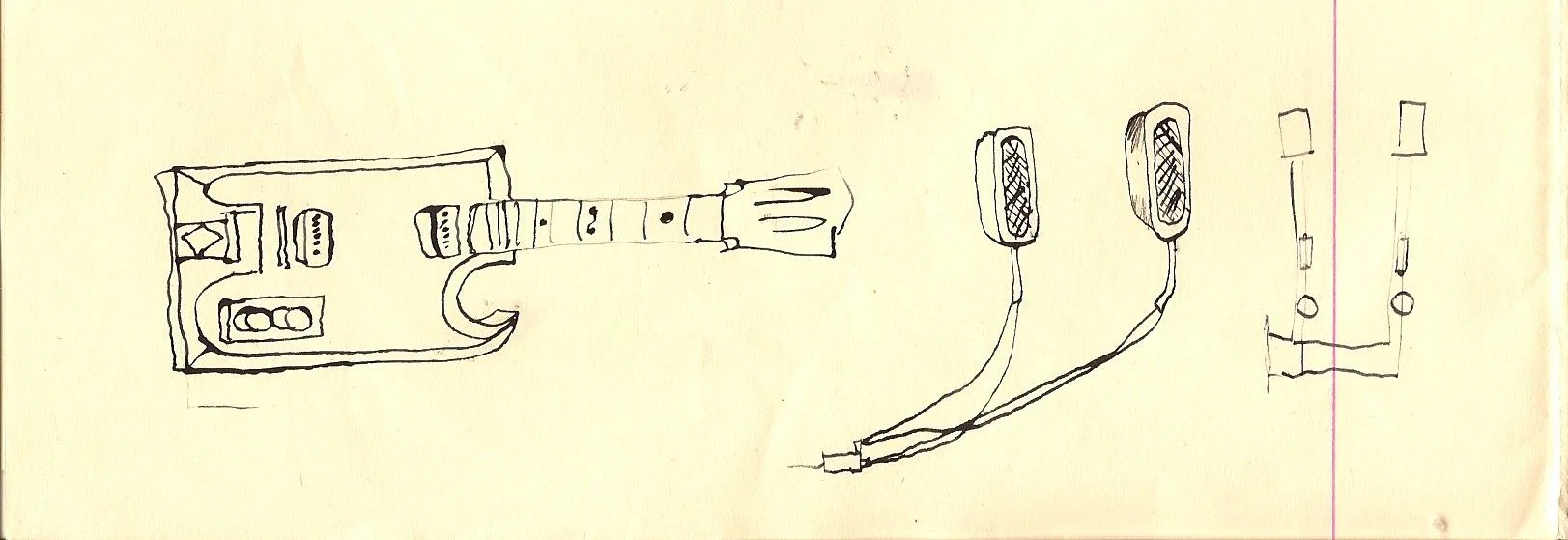THE ORIGINAL FLYING PLANK - LONDON 1974
I created The Flying Plank back in 1974, out of necessity. Decent electric guitars were expensive, ten times the average weekly wage for a Fender Stratocaster in those days. One alternative was to make your own. But that instilled the thought of enrolling in and attending woodwork classes and at the time I neither had the confidence or resources to try this approach. So when I was rummaging about in a basement in Brixton, South London and picked up a discarded off-cut from a scaffolding board, a germ of an idea was formed. This could be used as a guitar body. The plank was about the right dimensions and the rough finish, complete with stains and splashes of concrete was something I could live with. I was applying the same thought process which produced my first instruments in the mid 1960’s whilst still at school. As it turns out these early crude, but somehow satisfying, attempts were more of an exercise in deconstruction rather than construction of musical instruments. Somewhat akin to three dimensional cartoons, which is how they started off, as cartoons in a school jotter, inspired somewhat by the anarchic, irreverent lampooning style of the “MAD” magazine where ugliness was a virtue and the establishment was there to be derided.
A cartoon be Don Martin, one of the “MAD” stalwarts
An early take on stringed instrument production - 1965 vintage
So I had a body, and the electrics were to be had by recycling a DeArmond RHC - B acoustic guitar pickup I had lying around. The thought of making a neck was again, too convoluted and time consuming, even if I knew where to start. I ended up buying a second hand neck from an EKO ranger, from a Denmark Street music shop, hacked out a neck cavity, screwed it together and wired it up. Some redundant tuners, a wooden bridge and a trapeze tailpiece finished it off. Stringing it up, I fully expected it to collapse under the tension, but forty five years later I’m still waiting.
Why “Flying Plank”? At the time one of the most sought after guitars was the Gibson Flying V….designed for a a futuristic dream world from the creators at Gibson. By comparison the Plank grew to somehow represent the reality of the 1970’s, miners strikes, power cuts, refuse piling up in the streets, rising unemployment, the winter of discontent. Looking back, for me, it was more of a statement I suppose, the continuation of an anti-establishment train of thought that sprang up from the satisfaction of doodling Don Martin-esque creations in school jotters.
The original Flying Plank - 1974
From the jotter……1966 sketch with thoughts on wiring. Maybe this was retained in my subconscious to emerge in 1974 as the Plank.
Another page from the maths jotter, this time I seem to be thinking about the construction process. Strangely enough, I failed maths.
A Gibson Flying V……






